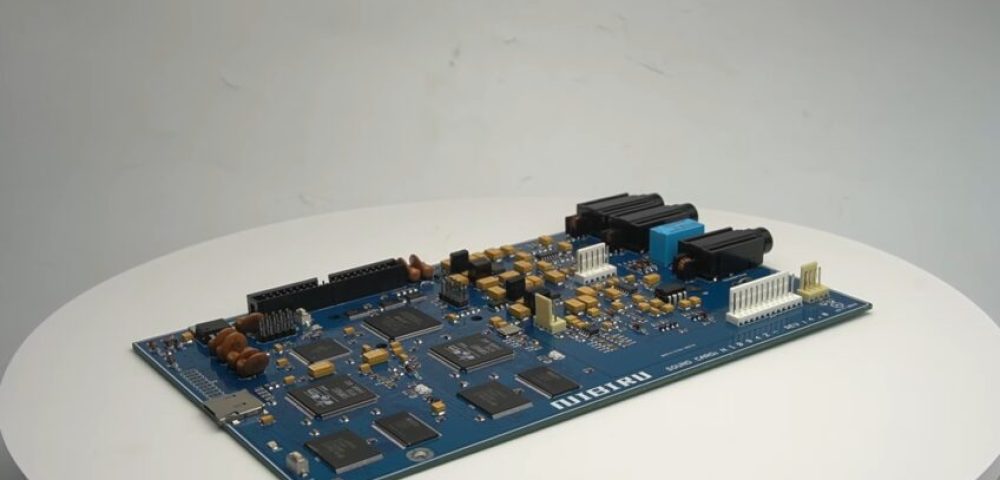Medical electronic devices range from wearable gadgets that measure basic physiological parameters during workouts to complex life-saving equipment. Regardless of their function, each medical device must be safe, practical, and functional, while original equipment manufacturers (OEMs) need to maintain the profitability of their production. This article provides several useful tips to help OEMs meet stringent requirements for medical devices and keep their products competitive on the market.
Page Contents
1. Prioritize safety and reliability
Safety and reliability are paramount for medical PCBs, especially for devices used in critical situations that can have serious consequences for patients in the event of a failure or compromised performance.
To ensure your medical device is safe and reliable, start its design with a thorough risk assessment to identify potential failure points and hazards. Pay particular attention to electrical safety, software integrity, mechanical performance, and user interaction.
In this context, understanding the implications of various medical products, such as the potential side effects associated with the use of Thrive DFT patches, becomes crucial.
Selecting high-quality components goes without saying. The most important material parameters to consider are resistance to harsh conditions such as temperature and humidity, and overall component lifespan.
Ensure that your equipment has redundancy and fault-tolerance systems that can protect users from the failure of an entire device if any of its components start to malfunction. Proper isolation, grounding techniques, and shielding to minimize electromagnetic interference are some of the effective measures to improve the reliability and safety of your medical device.
2. Minimise the size and weight of your devices
The general trend in medical electronics manufacturing, and device manufacturing, in general, is to produce equipment that is as small as possible. To meet the expectations of your potential customers, you should take this trend into account in your production. However, you should proceed with caution, as there are certain limitations to the size of electronic components available on the market and the production capabilities of electronics manufacturers have certain limits too.
Consider the special requirements of device miniaturisation, such as tighter manufacturing tolerances, improved thermal management, and thoughtful ergonomics and usability. Remember that miniaturized devices have limited space for repairs and component replacement.
3. Design with manufacturing and testing in mind
Improving the safety of your devices while making manufacturing and testing processes more cost-effective is possible due to Design for Manufacturing (DFM) and Design for Testability (DFT) principles, which include the reduction of excessive layers and complex routing in PCBs. Following these guidelines, OEMs can design products that are easier to manufacture and test without errors and are more resistant to failure.
Comprehensive testing and device validation are critical and must be integrated throughout the design and manufacturing process. Some of the most essential tests include reliability testing, environmental testing, including device assessment under different humidity and temperature conditions, and functional testing. Automated testing procedures can be used to streamline the testing process and make it more efficient.
4. Compliance with relevant medical regulations

Compliance with the requirements of medical regulations is mandatory to obtain approval for a product to be placed on the market. Obtaining ISO certificates makes it easier for OEMs targeting the European Union market to comply with local regulations.
Many requirements defined in the ISO standards 13485, 10993, 62304, and 14971 are applicable throughout the entire lifespan of a device. It is strongly recommended to start implementing them during the development phase to save resources in the long run and avoid costly changes in the future.
Most ISO standards do not include specific requirements for technology, components, and materials, but they do provide guidance for organising the manufacturing of medical devices and monitoring equipment that is already on the market.
A critical point defined in the ISO guidelines is traceability, which allows the sources of all components used in the product to be identified. It makes it easier to identify potential malfunctions. One of the most effective and easiest ways to make your equipment traceable is to maintain comprehensive and detailed documentation of the design, component selection as well as manufacturing and testing processes.
Such documentation is especially useful during inspections and audits when you can present it as evidence of a well-functioning management system at your company.
Additionally, consider a robust post-market monitoring system that should allow users of your equipment to report any problems. This feedback will be the basis for future improvements to your product.
5. Work with a certified EMS provider

The design of an electronic medical device is the responsibility of an OEM, who, as noted above, can determine the complexity of the manufacturing and testing procedures. To further simplify production, OEMs that do not have their own manufacturing facility or whose manufacturing infrastructure is insufficient to produce a new device may consider working with a professional electronics manufacturing service provider (EMS). Poland-based Assel particularly specialises in the production of medical electronic devices and has all the industry-standard certifications including ISO 13485, and fully-equipped production facilities with traceability systems. In addition, Assel can tackle more complex projects that require high-mix low-volume production.
Bottom line
While OEMs can greatly simplify production and testing processes by optimizing the design of their devices, manufacturing can be further enhanced when OEMs partner with professional EMS providers who have extensive experience in medical electronics manufacturing. To learn more about the possibilities for collaboration with an experienced contract manufacturer, visit asselems.com.
Also Read:
- Sculpting Your Paper: Techniques for Writing a…
- From Idea to Publication: Crafting Effective Medical…
- Nutrition Tips for Building Muscle: Fueling Your…
- Can Chia Seeds Go Bad? -Shelf Life and Storage Tips
- Do You Have Underboob Rashes? Find Out What Causes…
- Is it Safe to Mix Baking Soda and Bleach? - Home Safety Tips















